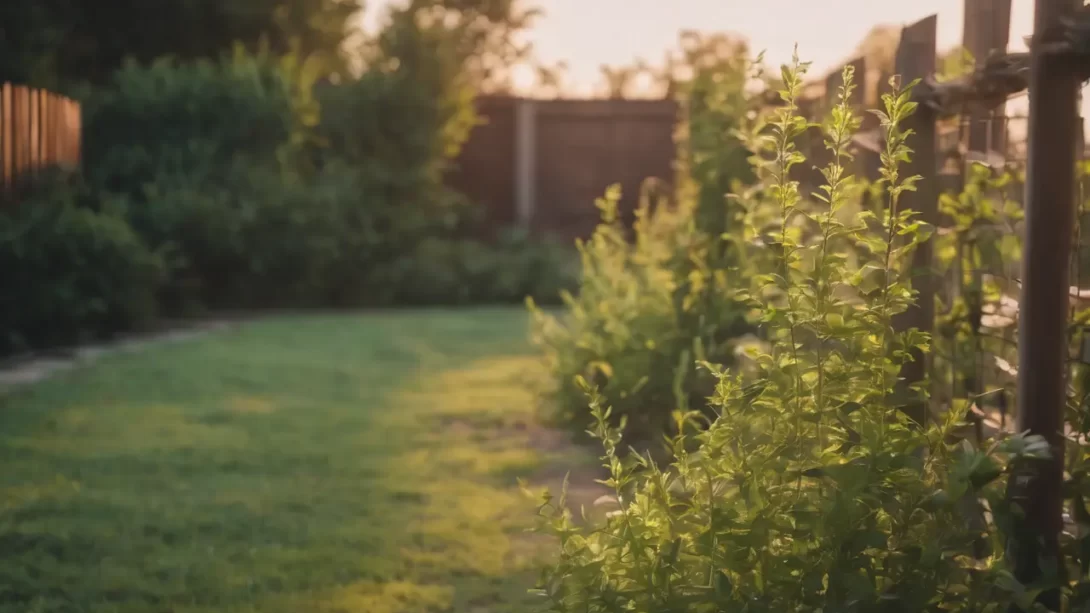Planting along a fence line can transform the borders of your property into an attractive and functional part of your garden. Whether you seek to create a natural privacy screen, enhance the aesthetic appeal of your garden, or establish a beneficial ecological niche, the right choice of plants can make all the difference. This article delves into a variety of plants ideal for fence lines, tailored to different needs and environments, and provides practical tips for their care and maintenance.
Considering Your Fence Line Environment
Before selecting plants for your fence line, it’s crucial to assess several key environmental factors. The climate of your area, the type of soil in your garden, the amount of sunlight the fence line receives, and the available space are all determining factors in plant selection. Additionally, consider the height and structure of your fence, as this will influence the growth habits of your chosen plants. Understanding the specific needs and growth patterns of potential plants will ensure a thriving fence line garden that enhances your property for years to come.
Shrubs and Bushes for Fence Lines
Shrubs and bushes are excellent options for creating a lush, living fence line. They provide structure, privacy, and, depending on the species, seasonal color. Here are some top choices:
- Evergreen Shrubs: For year-round coverage and privacy, evergreen shrubs like boxwood, holly, or arborvitae are ideal. They require minimal maintenance once established and can be pruned to maintain the desired size and shape.
- Flowering Shrubs: If you’re looking for seasonal blooms, consider hydrangeas, forsythia, or azaleas. These shrubs offer vibrant flowers and can create an eye-catching display during their blooming season.
- Low-Maintenance Options: For a fuss-free fence line, shrubs like junipers or privet, which are hardy and require little care, can be excellent choices.
When planting shrubs and bushes, consider their mature size to ensure they don’t overcrowd the space or overwhelm your fence. Also, account for the maintenance they will require, such as pruning and watering, to keep them healthy and well-shaped.
Climbing Plants for Vertical Interest
Climbing plants can add a unique vertical element to your fence line, offering both beauty and practical benefits. Depending on the type of fence you have, different climbers may be more suitable:
- For Wooden and Chain Link Fences: Fast-growing vines like clematis, morning glories, or ivy can quickly cover these structures. They latch onto surfaces easily and can provide a lush, green backdrop or a splash of color when in bloom.
- For Stone Walls and Solid Fences: Perennial climbers such as climbing roses or wisteria add a touch of elegance and old-world charm. These plants may need some initial support to start climbing but will become stunning focal points over time.
- Support for Climbers: Some climbers, especially heavier ones like wisteria, may require additional support structures. Installing trellises or wire frameworks can help manage their growth and ensure the health and stability of both the plant and the fence.
When selecting climbing plants, consider their growth rate and maintenance needs. Some, like ivy, can be vigorous and may require regular trimming to keep them in check.
Perennial Plants for Long-Term Beauty
Perennials are plants that return year after year, making them an ideal choice for creating a long-lasting, low-maintenance fence line garden. Here are some suggestions:
- Color and Texture: Choose perennials like lavender, Russian sage, or daylilies for a blend of color and texture. These plants not only provide visual interest but can also withstand varying conditions once established.
- Seasonal Interest: To ensure year-round appeal, select a mix of perennials that bloom at different times. For example, combine early bloomers like peonies with late bloomers like coneflowers.
- Planting and Care: When planting perennials, give them enough space to reach their full size. Consider their water and sunlight needs and prepare the soil accordingly. Mulching can help retain moisture and suppress weeds.
Perennials can provide a dynamic backdrop to your fence line, with minimal effort required each year. They are an excellent choice for gardeners looking for a balance of beauty and practicality.
Annuals for Seasonal Color and Variety
Annual plants, which complete their life cycle in one growing season, offer an opportunity to bring vibrant, changing colors to your fence line each year. They can be a fantastic complement to perennials or shrubs, providing bursts of color and variety:
- Instant Impact: Annuals like petunias, marigolds, or zinnias bloom quickly and offer a range of colors that can brighten up your fence line from spring to fall.
- Integrating with Perennials: Plant annuals in gaps between perennials or shrubs for a fuller, more colorful display. They can also be used to fill in spaces while waiting for slower-growing perennials and shrubs to mature.
- Care and Rotation: Most annuals require regular watering and feeding to achieve their full potential. At the end of the season, they can be replaced, offering an opportunity to experiment with different plants and color schemes each year.
Annuals are a great choice for gardeners who enjoy changing their garden’s theme or color palette regularly.
Incorporating Edible Plants
Edible plants can be both a beautiful and practical addition to your fence line. From fruit trees to berry bushes or climbing vegetables, these plants can provide fresh produce while enhancing the aesthetic of your garden:
- Fruit Trees: Espalier fruit trees, such as apples or pears, can be trained to grow flat against a fence, saving space while producing fruit.
- Berry Bushes: Raspberries or blackberries can be grown along fences, providing delicious fruits and a natural barrier when off-season.
- Climbing Vegetables: Utilize vertical space by growing climbing vegetables like peas, beans, or cucumbers. They can be both ornamental and productive.
When incorporating edible plants, ensure they are planted in soil that is fertile and well-drained. Regular pruning and harvesting will keep them healthy and productive.
Conclusion
Planting along a fence line is an excellent way to enhance the beauty and utility of your garden’s boundary. Whether you prefer the low-maintenance longevity of perennials, the instant color of annuals, the vertical appeal of climbers, or the practicality of edible plants, there’s a multitude of options to suit any garden style and gardener’s preference. By carefully considering your environment and needs, you can transform your fence line into a vibrant, living part of your garden that provides pleasure and utility throughout the year.




